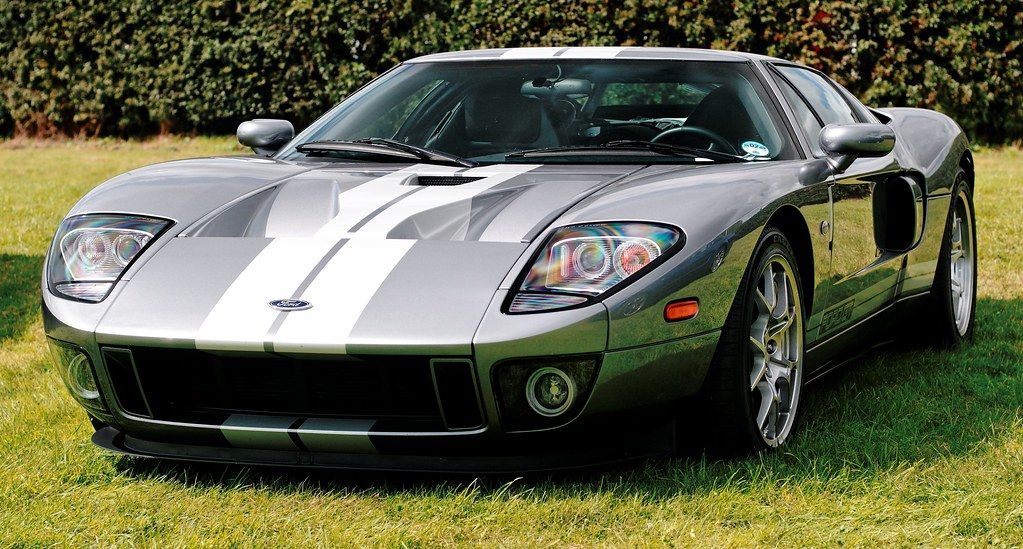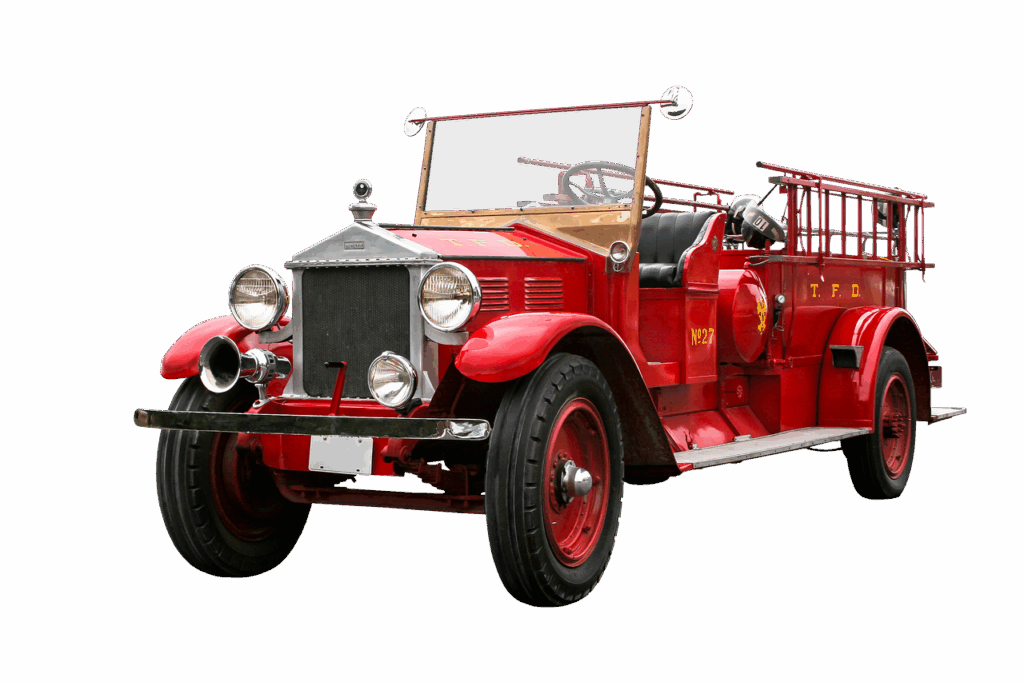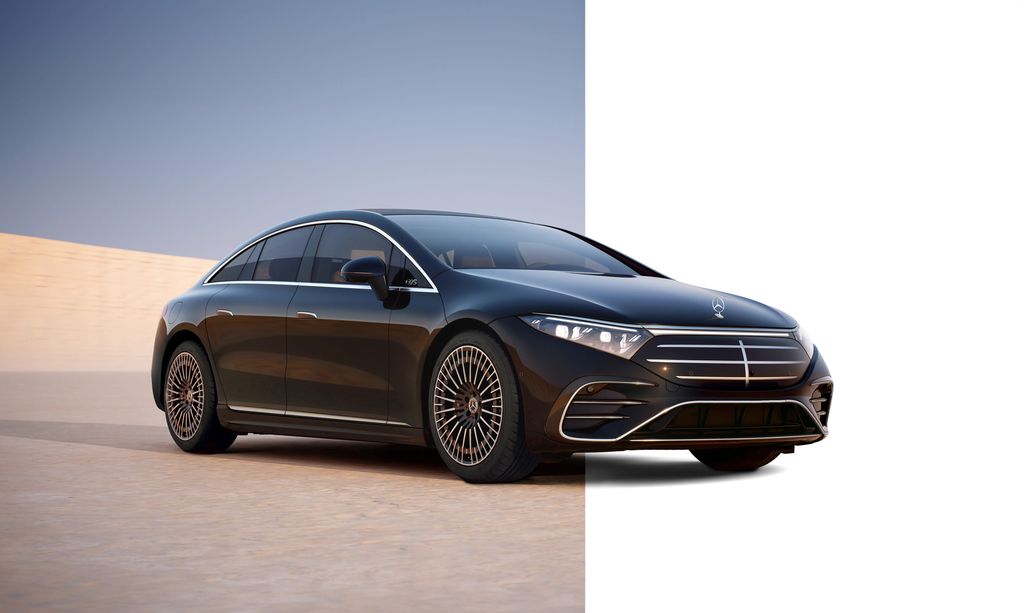
For many drivers, an SUV represents more than just a vehicle; it is a dependable partner for daily commuting, weekend adventures, and family road trips. The desire for a vehicle that won’t give you problems after just a year or two is paramount, especially for families who rely on their vehicle for safety and consistent performance. While some SUVs might be flashy or drive well initially, they don’t always hold up over time. This makes long-term reliability a critical factor, often near the top of the list for discerning buyers in 2025. This article dives deep into what makes an SUV truly reliable, focusing on models that have proven their mettle through real owner feedback and expert reviews, ensuring peace of mind for years to come.
Yet while some SUVs spend more time in repair shops than on the road, others prove themselves as long-lasting and dependable machines that rarely give owners headaches. These vehicles are the ones that combine smart engineering, quality components, and thoughtful design, allowing them to rack up miles without constantly demanding costly fixes. A strong track record of durability not only reduces repair costs but also adds peace of mind, speaking to years of real-world use and the experiences of thousands of satisfied owners.
The SUVs featured here share one defining quality: they seldom see the inside of a repair shop. While every vehicle requires oil changes, brake service, and other standard maintenance, these models stand out for avoiding the big-ticket breakdowns that drain wallets and leave owners stranded. Instead, they deliver consistent reliability and long service lives, often passing 150,000 miles with minimal trouble. For anyone who values peace of mind and reduced long-term costs, these SUVs serve as shining examples of vehicles that earn trust mile after mile. We have carefully compiled this list based on real owner feedback and expert reviews, focusing on models known for how well they’re expected to hold up over time.

1. **Toyota Highlander (2015–2020)**The Toyota Highlander has earned a strong reputation for reliability and durability, establishing itself as one of the most dependable midsize SUVs available. Owners consistently report that it requires little more than routine maintenance to stay in top shape, even as the odometer climbs past 150,000 miles. Toyota’s unwavering focus on long-lasting components, combined with careful engineering, means that major repairs are rarely necessary, which ultimately saves owners both precious time and significant money.
One of the Highlander’s undeniable strengths lies in its robust powertrain. The V6 engine, seamlessly paired with an automatic transmission, is widely known for its smooth operation and exceptional longevity. Unlike many competitors in the midsize SUV segment, this particular setup rarely suffers from premature failures or costly repairs, a common concern for many family buyers. Common issues reported by drivers are minor in nature, typically involving regular brake replacements or occasional sensor alerts, both of which are easily handled during routine service visits without major disruption.
Furthermore, the hybrid variant of the Highlander also benefits immensely from Toyota’s well-established and proven hybrid system. This system is recognized for being exceptionally durable and dependable, especially when serviced according to the manufacturer’s recommended schedule. This offers an additional layer of reliability for those seeking enhanced fuel efficiency without compromising on the vehicle’s long-term performance and trustworthiness. The consistent performance of both gasoline and hybrid powertrains underscores the Highlander’s commitment to reliability.
Another significant advantage contributing to the Highlander’s stellar reputation is the vehicle’s suspension and chassis design. Highlanders tend to skillfully avoid problems with struts, control arms, and other key components, a testament to their robust construction, even when driven regularly on rough roads or challenging terrain. Electrical systems within the Highlander are similarly robust, with infotainment, climate control, and safety features performing reliably over years of ownership. Owners rarely report glitches or failures, which profoundly adds to the perception that this SUV “just works” day in and day out.
Toyota’s extensive dealer network also plays a crucial role in making maintenance straightforward and hassle-free for Highlander owners. Parts are widely available across the country, and labor costs are consistently reasonable, significantly reducing the likelihood of expensive surprises. The vehicle’s strong resale value directly reflects its reliability, with used Highlanders often holding their worth better than many competitors. This powerful combination of low maintenance needs, strong engineering, and solid resale performance makes the Highlander a clear example of a truly reliable SUV. For families or anyone seeking a vehicle that spends more time on the road than in the shop, the Highlander stands out as a top choice that continues to deliver unwavering peace of mind for years.
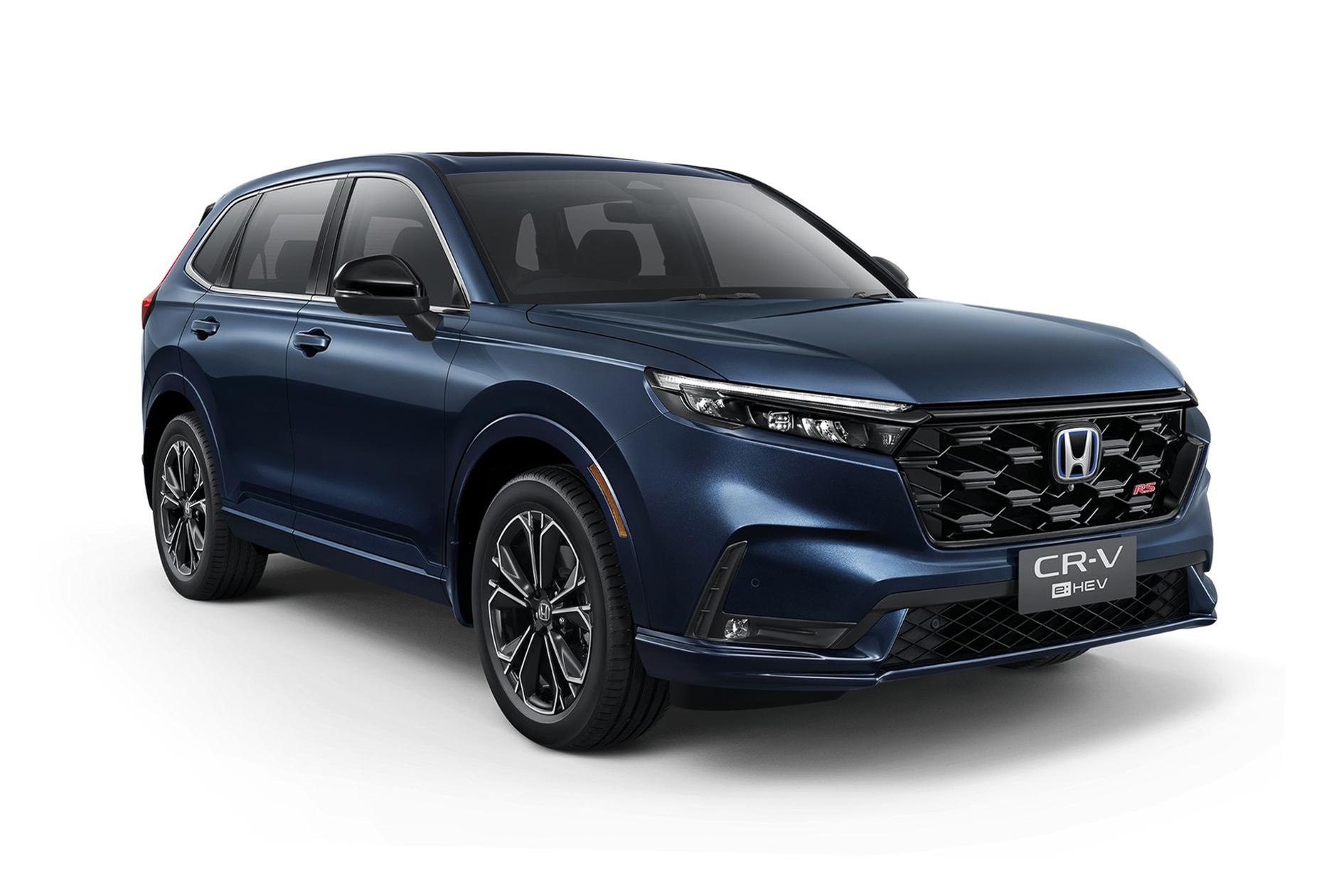
2. **Honda CR-V (2016–2021)**The Honda CR-V has meticulously built a strong reputation as one of the most reliable compact SUVs currently available in the market. Owners consistently appreciate its harmonious blend of efficiency, comfort, and unwavering durability, a combination that allows it to remain largely trouble-free even after many years of extensive use. Thanks to Honda’s careful and precise engineering, coupled with the strategic use of quality materials throughout its construction, the CR-V is seldom plagued by major mechanical issues that typically necessitate costly visits to a repair shop.
The powertrain stands as a primary and foundational factor in the CR-V’s impressive reliability. Its robust four-cylinder engine, paired with either a continuously variable transmission (CVT) or a traditional automatic in earlier models, is expertly designed to last well beyond 150,000 miles with diligent and proper maintenance. Common problems reported by owners are minor in nature, typically including routine replacements such as brake pads, tires, or standard fluid changes—all expected wear-and-tear items. Crucially, unlike many other vehicles in its competitive class, the CR-V rarely suffers from transmission failure or significant engine troubles, which are often the main culprits behind expensive and unexpected repairs in SUVs.
Suspension components on the CR-V also consistently perform exceptionally well over time. Struts, shocks, and bushings tend to wear gradually and predictably without sudden, unexpected failures, which plays a vital role in keeping the ride quality consistent and helps to significantly reduce unforeseen maintenance costs. Electrical systems, encompassing infotainment and crucial safety electronics, are similarly reliable, effectively avoiding the frustrating glitches and failures that can often plague other compact SUVs, leading to a smoother user experience. Interior components, such as seat adjustments and window mechanisms, also exhibit remarkable durability and hold up remarkably well over time, further reinforcing the CR-V’s overall robust and long-lasting nature.
Another significant advantage that enhances the CR-V’s appeal is Honda’s comprehensive and extensive dealer network, which ensures that replacement parts are readily available and labor costs remain consistently reasonable. This combination of accessible service, dependable engineering, and proven longevity makes the CR-V an undeniable standout in its highly competitive segment. Buyers can confidently expect a vehicle that remains on the road for many years with minimal intervention, making it one of the smartest choices for those seeking a low-maintenance SUV that performs reliably through both the demands of city driving and the rigors of long-distance trips. It is a testament to Honda’s commitment to building vehicles that are truly built to last.
Car Model Information: 2020 Honda CR-V EX
Name: Honda CR-V
Caption: 2023 Honda CR-V e:HEV
Manufacturer: Honda
Aka: Honda Breeze (China, 2019–present)
Production: 1995–present
Class: Compact crossover SUV
BodyStyle: Sport utility vehicle
Layout: Front-engine, front-wheel-drive layout,Front-engine, four-wheel-drive layout
Chassis: Unibody
Predecessor: Honda Crossroad
Successor: Honda ZR-V
Categories: 2000s cars, 2010s cars, 2020s cars, All-wheel-drive vehicles, All Wikipedia articles written in British English
Summary: The Honda CR-V (also sold as the Honda Breeze in China since 2019) is a compact crossover SUV manufactured by Japanese automaker Honda since 1995. Initial models of the CR-V were built using the same platform as the Civic.
Honda began producing the CR-V in Sayama, Japan, and Swindon, United Kingdom, for worldwide markets, adding North American manufacturing sites in East Liberty, Ohio, United States, in 2007; El Salto, Jalisco, Mexico, in late 2007 (ended in early 2017); Alliston, Ontario, Canada, in 2012; and Greensburg, Indiana, United States, in February 2017. The CR-V is also produced in Wuhan for the Chinese market by Dongfeng Honda, and also marketed as the Breeze in China for the version produced at Guangzhou by Guangqi Honda.
Honda states that “CR-V” stands for “Comfortable Runabout Vehicle,” while the term “Compact Recreational Vehicle” was used in a British car review article that was republished by Honda, associating the model name with the Sports Utility Vehicle abbreviation of SU-V.
As of 2022, the CR-V is positioned between the smaller ZR-V (marketed as HR-V in North America) — with which the CR-V shares a platform — and the larger North American market Passport/Pilot or the Chinese market Avancier/UR-V. It is currently Honda’s best-selling vehicle in the world, and the second best-selling SUV globally in 2020.
Get more information about: Honda CR-V
Buying a high-performing used car >>>
Brand: Honda Model: CR-V
Price: $20,995 Mileage: 71,622 mi.
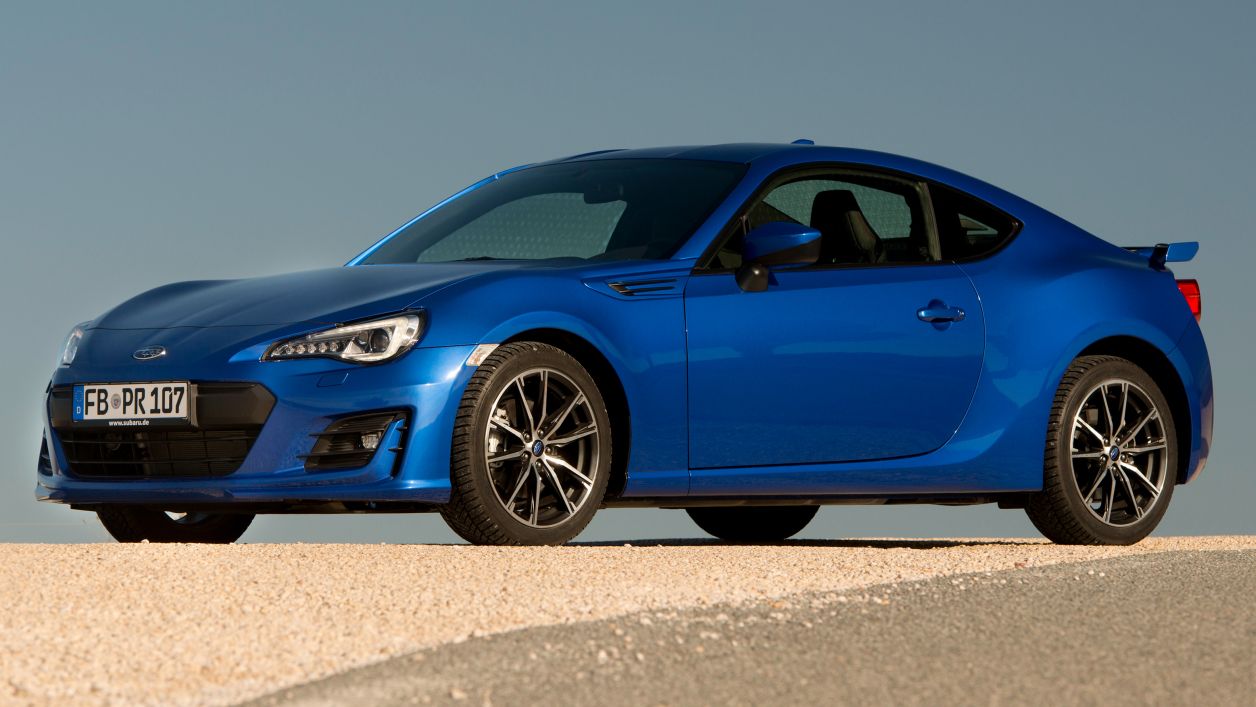
3. **Subaru Forester (2017–2021)**The Subaru Forester has long been rightfully recognized for its exceptional dependability, and the models produced between 2017 and 2021 proudly continue to uphold this stellar reputation. Known for its unique ability to combine robust all-wheel-drive capability with a thoughtfully durable design, the Forester consistently delivers both impressive off-road competence and reassuring long-term reliability. This unique blend makes it a firm favorite among drivers who specifically need a versatile SUV that doesn’t demand constant, inconvenient trips to the repair shop, offering a genuine sense of freedom and confidence on various terrains.
The engine and drivetrain are undoubtedly key reasons behind the Forester’s well-deserved low-maintenance reputation. Its signature boxer engine design ensures a balanced and smooth performance while skillfully keeping mechanical issues to an absolute minimum, a characteristic highly valued by long-term owners. Furthermore, the all-wheel-drive system, which can often be a source of problems in other SUVs from different manufacturers, is exceptionally well-engineered in the Forester and tends to hold up remarkably well, even under genuinely demanding conditions like heavy snow or rough trails. Routine maintenance, such as regular oil changes and essential fluid checks, is generally all that is required to keep this vehicle in peak operating condition for many tens of thousands of miles.
Suspension and steering components also consistently demonstrate impressive longevity in the Subaru Forester. Control arms, struts, and shocks rarely experience premature failures, contributing significantly to the vehicle’s ability to maintain a comfortable, composed, and predictable ride quality over an extended period. The electrical systems, including the intuitive infotainment display, essential lighting, and advanced safety technology, are robust and seldom require significant or costly repairs. The interior quality is equally solid and well-constructed, with seats, windows, and adjustment mechanisms showing minimal wear and tear even after years of diligent daily use, highlighting Subaru’s commitment to overall build quality.
Subaru’s strong and comprehensive network of service centers, coupled with the ready availability of genuine OEM parts, further works to reduce ownership headaches and unexpected expenses. Labor costs for maintenance and repairs remain consistently reasonable, and most repairs are typically straightforward due to the vehicle’s logical and well-thought-out engineering. The Forester’s outstanding reputation for reliability also plays a crucial role in helping to maintain its strong resale value, making it a highly practical and financially sensible choice for owners who intend to keep their vehicle for the long term. With minimal major issues consistently reported by owners, the Forester unequivocally stands out as a compact SUV that uncompromisingly prioritizes dependability, ensuring it spends more precious time on the open road and considerably less time inconvenienced in the shop.
Car Model Information: 2020 Subaru Forester Limited
Name: Subaru Forester
Manufacturer: Subaru
Production: 1997–present
Class: Compact crossover SUV
BodyStyle: SUV
Related: Subaru Impreza
Layout: Front-engine, all-wheel drive
Predecessor: Subaru Bighorn
Categories: 2000s cars, 2010s cars, All-wheel-drive vehicles, All Wikipedia articles written in American English, All articles containing potentially dated statements
Summary: The Subaru Forester (Japanese: スバル・フォレスター, Hepburn: Subaru Foresutā) is a compact crossover SUV that has been manufactured by Subaru since 1997. The first generation was built on the platform of the Impreza in the style of a taller station wagon, a style that continued to the second generation, while the third-generation model onwards moved towards a crossover SUV design. A performance model was available for the second-generation Forester in Japan as the Forester STi.
Get more information about: Subaru Forester
Buying a high-performing used car >>>
Brand: Subaru Model: Forester
Price: $20,235 Mileage: 101,793 mi.

4. **Lexus RX (2015–2020)**The Lexus RX has long been rightfully recognized as a gold standard and a true benchmark for reliability within the luxury SUV segment. Owners consistently report remarkably low maintenance costs and very minimal visits to the repair shop, making it one of the most dependable vehicles not just in its class, but across the entire SUV market. Its sophisticated combination of high-quality engineering, robust and durable components, and meticulous attention to every minute detail collectively ensures that it remains largely trouble-free and performs flawlessly even after many years of rigorous regular use, a critical factor for discerning luxury buyers.
The RX’s powertrain is an absolutely major contributor to its stellar reliability record. The smooth and potent V6 engine, seamlessly paired with an equally smooth automatic transmission, is expertly designed to withstand high mileage with an impressive scarcity of issues. Engine failures in the Lexus RX are genuinely rare occurrences, and the transmission seldom exhibits the kind of troublesome problems that unfortunately plague many other luxury SUVs in this highly competitive segment, often a source of significant owner frustration. Furthermore, the hybrid versions of the RX also perform with remarkable reliability when meticulously maintained according to the manufacturer’s recommendations, with Toyota’s well-proven and advanced hybrid technology strongly contributing to its overall outstanding durability and peace of mind.
Suspension and chassis components in the Lexus RX are similarly well-designed and engineered for longevity. Struts, shocks, and control arms consistently hold up exceptionally well over time, providing an enduringly comfortable and composed ride while effectively avoiding the need for frequent and costly repairs. The vehicle’s sophisticated electronic systems, including advanced navigation, precise climate control, and comprehensive safety features, are undeniably dependable and rarely experience failures. Owners consistently report very few glitches with the infotainment system or the dashboard electronics, which are often pervasive sources of frustration and expense in many other luxury SUVs, highlighting Lexus’s superior integration and quality control.
Another significant factor that strongly contributes to the RX’s enviable low-maintenance reputation is Lexus’s exemplary service network. Genuine parts are widely and readily available, and any necessary repairs can typically be handled by standard dealerships without the exorbitant labor costs often associated with luxury vehicle service. The SUV’s consistently strong resale value further serves as a clear reflection of its unparalleled reliability; astute buyers are more than willing to pay a premium for pre-owned RX models precisely because of their proven track record of durability and long-term satisfaction. This speaks volumes about the brand’s enduring reputation for quality.
These combined factors firmly establish the Lexus RX as a top-tier choice for those seeking a luxury SUV that provides consistent, high-level performance with minimal headaches and unexpected expenses. For drivers who genuinely value peace of mind, understated elegance, and unwavering long-term reliability in their premium vehicle, the RX remains an absolute standout not only in the midsize luxury SUV category but also across the broader general SUV market, embodying a commitment to excellence that lasts for years.
Car Model Information: 2022 Lexus RX 450h Base
Name: Lexus RX
Caption: Lexus RX 500h F Sport Performance (TALH17, Germany)
Manufacturer: Toyota
Aka: Toyota Harrier
Production: December 1997 – present
ModelYears: 1998–present
Class: unbulleted list
BodyStyle: SUV
Layout: unbulleted list
Chassis: Unibody
Successor: unbulleted list
Categories: 2000s cars, 2010s cars, 2020s cars, All-wheel-drive vehicles, All Wikipedia articles written in American English
Summary: The Lexus RX (Japanese: レクサス・RX, Hepburn: Rekusasu RX) is a luxury crossover SUV sold since 1998 by Lexus, a luxury division of Toyota. Originally released in its home market of Japan in late 1997 as the Toyota Harrier, export sales began in March 1998 as the Lexus RX.
Considered as the first luxury crossover SUV by many sources, five generations of the RX have been produced to date, the first being compact in size, and the latter classified as mid-size. Both front- and four-wheel drive configurations have been used on the RX series, and several gasoline powertrain options, including V6 engines and hybrid systems, have been offered. In the Lexus model lineup, the RX sits below the larger Lexus LX (marketed as the Toyota Land Cruiser body-on-frame SUVs outside North America, respectively), and below the body-on-frame, but also mid-size GX SUV. The name “RX” stands for “Radiant Crossover”. It has also been labelled as “Recreational Cross Country” in some markets. The RX’s current Toyota counterpart is the Highlander/Kluger; past counterparts included the Harrier and Venza.
The first-generation RX 300, fitted with a 3.0-liter V6 engine, began sales in 1998. The Japanese market Harrier released in 1997 also offered a 2.2-liter inline-four, later uprated to 2.4 liters. The second-generation RX 300 (3.0-liter V6) and RX 330 (3.3-liter V6) models went on sale in 2003, with both variants supplanted by the more powerful RX 350 (3.5-liter V6) in 2006. Like the previous series, a 2.4-liter inline-four engine was sold alongside the 3.0-liter V6 in the Japanese market Harrier. In 2005, a hybridized gasoline-electric version of the 3.3-liter second-generation model was made available as the RX 400h in export markets and as the Harrier Hybrid in Japan. For the third generation released in 2009, both RX 350 (3.5-liter V6) and RX 450h (3.5-liter V6 hybrid) models were initially offered, with an entry-level RX 270 (2.7-liter inline-four) offered by Lexus in some Asian markets, including in Japan, since 2010. Since the release of the third generation, Japanese sales have occurred under the RX name as opposed to Harrier as had been the case previously. In the fourth generation, a turbocharged (2.0-liter inline-four) RX 200t/300 model was introduced to replace the previous 2.7-liter unit.
The RX has been assembled at Toyota Motor Kyushu since launch. The RX and RX Hybrid were the first Lexus models to be built outside Japan, with North American market versions produced at the Toyota Motor Manufacturing Canada plant in Cambridge, Ontario beginning 2003 (RX) and expanded in 2014 (RX Hybrid). Hybrid transaxles are built at the Kokura plant in Kitakyushu, Fukuoka since 2009.
Get more information about: Lexus RX
Buying a high-performing used car >>>
Brand: Lexus Model: RX
Price: $43,678 Mileage: 46,017 mi.
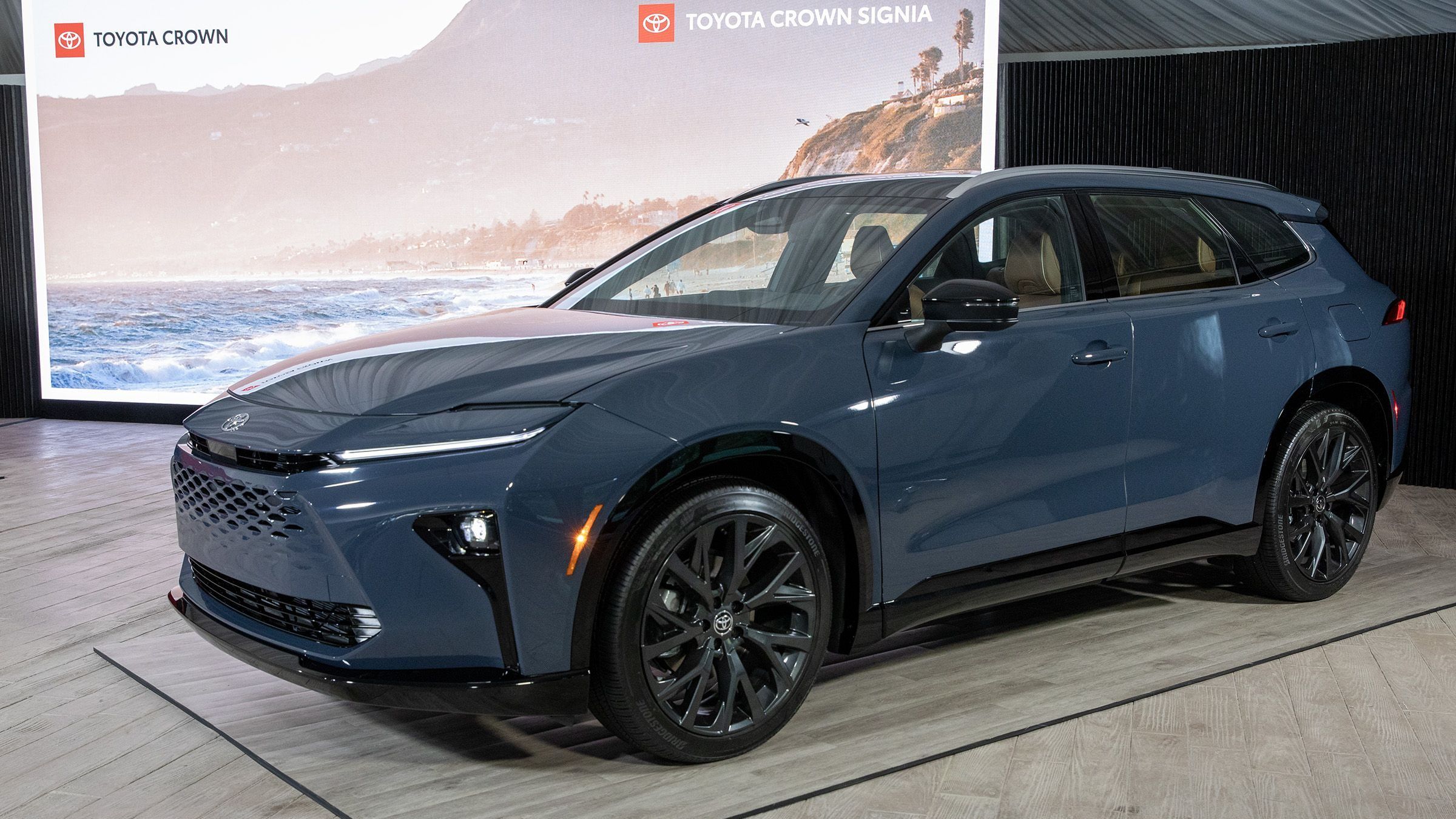
5. **Toyota 4Runner (2016–2021)**The Toyota 4Runner has rightfully earned its formidable reputation as one of the most rugged, durable, and exceptionally reliable midsize SUVs available on the market today. Built upon a traditional truck-based platform, it inherently offers exceptional durability and a robust construction, which directly translates into significantly fewer trips to the repair shop compared to many other vehicles in its competitive segment. Owners frequently report with pride that the 4Runner can confidently exceed an impressive 200,000 miles with only routine maintenance, emphatically highlighting its strong, enduring long-term reliability and rugged dependability for any adventure.
The 4Runner’s powertrain is an absolutely key reason for its well-deserved low-maintenance reputation. Its stalwart V6 engine, seamlessly paired with either a five-speed automatic or a six-speed transmission depending on the specific model year, is widely known for its legendary longevity and bulletproof performance. Engine failures are remarkably rare occurrences, and the transmission almost never requires major service, standing as a testament to its robust engineering. Common maintenance tasks are straightforward and relatively affordable, primarily including regular oil changes, routine brake service, and standard fluid replacements, ensuring minimal fuss for owners.
Suspension components, including the shocks, struts, and control arms, are exceptionally robust and are specifically designed to effortlessly handle demanding off-road conditions without experiencing premature wear or structural fatigue. The 4Runner’s classic body-on-frame construction further contributes significantly to its inherent durability, effectively reducing the likelihood of any structural issues developing over its extended lifespan. Electrical systems are similarly dependable, with very few reported failures in the infotainment unit, crucial lighting, or essential safety electronics, a common pain point for other vehicles. Interior components such as reliable seat adjustments, robust power windows, and secure door locks consistently perform well even after years of heavy use, reinforcing its overall toughness.
Toyota’s widespread and highly efficient dealer network, coupled with the ready availability of accessible parts, further enhances the overall ease of ownership for 4Runner drivers. Labor costs are consistently reasonable, and repairs are rarely complex due to the vehicle’s elegantly straightforward and proven engineering, a clear advantage in an era of increasingly complex vehicles. Resale values for the 4Runner remain exceptionally strong, directly reflecting its unparalleled reputation for unwavering reliability and rugged durability. Owners can confidently expect a vehicle that remains incredibly capable and dependable through both the demands of daily driving and the challenges of extended, adventurous off-road use.
For buyers who unequivocally prioritize durability, robust construction, and consistent long-term performance above all else, the 4Runner continues to be one of the absolute best midsize SUVs available. It consistently excels at avoiding costly repairs and unexpected maintenance, embodying a true spirit of adventure combined with uncompromising reliability that stands the test of time, mile after arduous mile, year after year.
Car Model Information: 2006 Toyota 4Runner SR5
Name: Toyota 4Runner
Caption: 2025 Toyota 4Runner, TRD Sport trim
Manufacturer: Toyota
Aka: Toyota Hilux Surf (Japan, 1983–2009)
Production: October 1983 – present
ModelYears: 1984–present (US)
Class: unbulleted list
Layout: unbulleted list
Chassis: Body-on-frame
Successor: unbulleted list
Categories: 1990s cars, 2000s cars, 2010s cars, 2020s cars, All-wheel-drive vehicles
Summary: The Toyota 4Runner is an SUV manufactured by the Japanese automaker Toyota and marketed globally since 1984, across six generations. In Japan, it was marketed as the Toyota Hilux Surf (Japanese: トヨタ・ハイラックスサーフ, Hepburn: Toyota Hairakkususāfu) and was withdrawn from the market in 2009. The original 4Runner was a compact SUV and little more than a Toyota Hilux pickup truck with a fiberglass shell over the bed, but the model has since undergone significant independent development into a cross between a compact and a mid-size SUV. All 4Runners have been built in Japan at Toyota’s plant in Tahara, Aichi, or at the Hino Motors (a Toyota subsidiary) plant in Hamura.
The name “4Runner” was created by copywriter Robert Nathan with the Saatchi & Saatchi advertising company as a play on the term “forerunner”. The agency held contests to invent new names for Toyota’s forthcoming vehicles. According to Toyota, the “4” described the vehicle’s 4-wheel drive system while “Runner” was a reference to its all-terrain capabilities and how it could “run” off-road.
For some markets, the Hilux Surf was replaced in 2005 by the lower cost but similar Fortuner, which is based on the Hilux platform.
As of 2021, the 4Runner is marketed in the Bahamas, Bolivia, Canada, Chile, Colombia, Costa Rica, El Salvador, Guatemala, Panama, Peru, the United States and Venezuela. Many markets that did not receive the 4Runner, such as Europe and the Middle East, instead received the similarly designed Land Cruiser Prado, another SUV that shared many of the same components.
The 4Runner came in at number five in a 2019 study by iSeeCars.com ranking the longest-lasting vehicles in the US. The 4Runner had 3.9 percent of vehicles over 200,000 miles (320,000 km), according to the study.
Get more information about: Toyota 4Runner
Buying a high-performing used car >>>
Brand: Toyota Model: 4Runner
Price: $12,265 Mileage: 212,770 mi.

6. **Honda Pilot (2016–2021)**The Honda Pilot is a midsize SUV known for its practicality and durability. Its strong reliability record has made it a favorite among families and individuals seeking a vehicle that requires minimal intervention from repair shops. Owners often report that the Pilot remains largely trouble-free, even as mileage climbs past 150,000 miles, thanks to well-engineered components and thoughtful design.
The Pilot’s powertrain plays a major role in its low-maintenance reputation. The V6 engine, paired with a six-speed automatic transmission, is durable and performs consistently over many miles. Engine and transmission failures are uncommon, and most maintenance involves routine tasks such as oil changes, brake replacements, and periodic fluid checks. The Pilot avoids the costly mechanical issues that often plague other midsize SUVs.
Suspension and steering components are equally robust. Shocks, struts, and control arms wear gradually and rarely fail prematurely, helping maintain a smooth and predictable ride. Electrical systems, including infotainment, climate control, and safety electronics, are also dependable and seldom require repairs. Interior components, such as seat adjustments, power windows, and door locks, maintain their functionality over years of use.
Honda’s extensive dealer network ensures that replacement parts are accessible and labor costs remain reasonable. Resale values for the Pilot remain strong, reflecting confidence in its reliability. Whether used for daily commuting, road trips, or family transportation, the Pilot consistently demonstrates a low likelihood of major repairs.
For drivers seeking a dependable midsize SUV that combines comfort, practicality, and long-term durability, the Honda Pilot remains an excellent choice, spending more time on the road and less time in service bays.
Car Model Information: 2014 Honda Pilot EX-L
Name: Honda Pilot
Caption: 2023 Honda Pilot Touring (US)
Manufacturer: Honda
Production: 2002–present
ModelYears: 2003–present
Class: Mid-size crossover SUV
BodyStyle: SUV
Layout: unbulleted list
Categories: 2010s cars, 2020s cars, All-wheel-drive vehicles, All Wikipedia articles written in American English, All articles containing potentially dated statements
Summary: The Honda Pilot is a mid-size crossover SUV with three-row seating manufactured by Honda since 2002 for the 2003 model year. Primarily aimed at the North American market, the Pilot is the largest SUV produced by Honda. As of 2025, the Pilot is manufactured in Lincoln, Alabama, and the Pilot was produced in Alliston, Ontario until April 2007. The first generation Pilot was released in April 2002 as a 2003 model.
The Pilot shares its platform with the Acura MDX, as well as the North American market Odyssey minivan. The Pilot’s unibody construction and independent suspension are designed to provide handling similar to that of a car, and it has integrated perimeter frame rails to permit towing and light off-road use.
Prior to the introduction of the Pilot, Honda marketed the compact crossover CR-V, the midsize Passport (rebadged Isuzu Rodeo) fullsize Crossroad (rebadged Land Rover Discovery series 1) and Acura SLX (rebadged Isuzu Trooper). Unlike the Passport, Crossroad and SLX which were truck-based body-on-frame designs, the Pilot shared a unibody construction layout akin to the smaller Civic-based CR-V. The Pilot is Honda’s largest SUV, although the 2010 Crosstour surpassed the Pilot in length.
The Pilot is sold in North America and the Middle East, while the Honda MDX (first generation Acura MDX) was marketed in Japan and Australia for several years. The second-generation Pilot was also sold in Russia, Ukraine, South Korea, Latin America, and the Philippines.
Get more information about: Honda Pilot
Buying a high-performing used car >>>
Brand: Honda Model: Pilot
Price: $12,645 Mileage: 139,975 mi.

7. **Mazda CX-5 (2017–2021)**The Mazda CX-5 is widely recognized for blending stylish design, engaging driving dynamics, and long-term reliability. Owners appreciate that it seldom requires major repairs, making it a practical choice for those who want an SUV without constant trips to the shop. Its combination of strong engineering, quality materials, and thoughtful component selection ensures it remains dependable even as mileage rises.
The CX-5’s powertrain is one of its most reliable aspects. The four-cylinder engine, paired with a smooth automatic transmission, rarely experiences serious issues. Engine failures are uncommon, and the transmission performs consistently over many miles. Regular maintenance items such as oil changes, brake pads, and tires are typically the only services required to keep the vehicle in peak condition. Unlike some rivals, the CX-5 does not suffer from common issues like timing chain or turbocharger failures.
Suspension components are similarly durable. Struts, shocks, and control arms wear gradually and rarely cause unexpected problems. The steering system maintains precision over time, contributing to the vehicle’s well-regarded handling characteristics. Electrical systems, including infotainment, lighting, and safety technology, are robust and seldom need repair. Interior elements, such as seat adjustments and window mechanisms, hold up well with normal use, further reinforcing the SUV’s reputation for reliability.
Mazda’s strong dealer network ensures that parts are accessible and repairs are straightforward when needed. Labor costs are reasonable, and most issues can be addressed without excessive expense. The CX-5 also retains its value well on the used market, reflecting buyers’ confidence in its dependability.
For drivers seeking a compact SUV that combines style, performance, and minimal maintenance, the Mazda CX-5 proves that it can remain on the road for years without draining time or money in service bays. Its low incidence of major repairs makes it one of the standout choices in its segment.
Car Model Information: 2023 Mazda CX-5 2.5 S Select
Name: Mazda CX-5
Caption: Second generation CX-5 (KF; 2024)
Manufacturer: Mazda
Production: 2012–present
ModelYears: 2013–present
Class: Compact crossover SUV
BodyStyle: SUV
Layout: unbulleted list
Predecessor: unbulleted list
Categories: 2020s cars, All-wheel-drive vehicles, All articles containing potentially dated statements, All articles lacking reliable references, All articles with dead external links
Summary: The Mazda CX-5 is a compact crossover SUV, produced by Mazda since 2012. A successor to both the Tribute and the slightly larger CX-7, it is Mazda’s first model to feature the “Kodo” design language and the first model to be fully developed with a range of technologies branded as Skyactiv, including a rigid, lightweight platform combined with a series of engines and transmissions to reduce emissions and fuel consumption.
Since 2019, the CX-5 is positioned above the smaller CX-30. As of 2022, depending on the region, the CX-5 is positioned right below the larger CX-50, CX-60 or the CX-8 within Mazda’s crossover SUV line-up.
Since 2014, the CX-5 has consistently been Mazda’s best-selling model globally. It achieved record sales in 2019, with 444,262 units sold worldwide. As of March 2022, cumulative sales of the CX-5 reached around 3.5 million units.
Get more information about: Mazda CX-5
Buying a high-performing used car >>>
Brand: Mazda Model: CX-5
Price: $23,871 Mileage: 44,320 mi.

8. **Toyota RAV4 (2016–2021)**The Toyota RAV4 has long been a benchmark for compact SUV reliability, and the 2016–2021 models continue this tradition. Owners consistently report minimal repair needs, which makes the RAV4 a practical option for families and individuals alike. Its durability, combined with low maintenance costs, has contributed to its reputation as one of the most dependable vehicles in its class. Reinforcing this, Consumer Reports gave the 2025 Toyota RAV4 small SUV an impressive 86/100 score for predicted reliability, marking it as the highest-rated Toyota model in this category for the year.
The powertrain is a major factor in the RAV4’s reliability. The four-cylinder engine, paired with either a standard automatic or CVT in newer models, is known for longevity and smooth operation. Engine failures are extremely rare, and transmission issues are minimal compared to competitors. Routine maintenance, including oil changes, brake replacements, and fluid checks, is typically sufficient to keep the vehicle in excellent condition.
The hybrid version of the RAV4 also performs reliably, benefiting from Toyota’s well-tested hybrid technology. Suspension components, including shocks, struts, and control arms, wear gradually and require minimal attention, helping maintain a comfortable and stable ride over time. Electrical systems, including infotainment and safety features, are durable and rarely fail. Interior components, from power windows to seat adjustments, maintain functionality even after years of regular use.
Toyota’s extensive dealer network ensures easy access to parts and reasonable labor costs. Resale values for the RAV4 remain high due to its strong reputation for reliability. Owners enjoy a vehicle that delivers consistent performance, low repair costs, and long-term durability. For anyone seeking a compact SUV that spends more time on the road than in the shop, the Toyota RAV4 continues to be an excellent and dependable choice.
Car Model Information: 2024 Toyota RAV4 LE
Name: Toyota RAV4
Caption: 2019 Toyota RAV4 LE AWD (AXAA54, US)
Manufacturer: Toyota
Aka: unbulleted list
Production: 1994–present
Class: Compact crossover SUV
Layout: unbulleted list
Categories: 2000s cars, 2010s cars, 2020s cars, All-wheel-drive vehicles, All Wikipedia articles written in British English
Summary: The Toyota RAV4 (Japanese: トヨタ・RAV4, Hepburn: Toyota Ravufō) is a compact crossover SUV produced by the Japanese automobile manufacturer Toyota. It is known for starting the wave of compact crossovers. The RAV4 is one of the best-selling SUVs of all time, having sold over 10 million units by February 2020. In February 2025, the RAV4 replaced the Ford F-150 as the top selling car in the United States, after nearly four decades of the F-150’s reign.
It made its debut in Japan and Europe in 1994, and in North America in 1995, being launched in January 1996. The vehicle was designed for consumers wanting a vehicle that had most of the benefits of SUVs, such as increased cargo room, higher visibility, and the option of full-time four-wheel drive, along with the maneuverability of a mid-size car. The vehicle’s name is an abbreviation of “Recreational Active Vehicle with 4-wheel drive”, or “Robust Accurate Vehicle with 4-wheel drive”, although not all models come equipped with the four-wheel drive system.
For the third-generation model, Toyota offered both short- and long-wheelbase versions of the RAV4. Short-wheelbase versions were sold in Japan and Europe; long-wheelbase versions in Australia and North America. Toyota of Japan also sold the longer-wheelbase version as the Toyota Vanguard (Japanese: トヨタ・ヴァンガード, Hepburn: Toyota Vangādo) at Toyopet Store dealership chain from 2005 through 2016. RAV4 for the Japanese market were sold at two different Toyota dealership chains, Corolla Store and Netz.
Get more information about: Toyota RAV4
Buying a high-performing used car >>>
Brand: Toyota Model: RAV4
Price: $26,690 Mileage: 46,221 mi.

9. **Ford Escape (2017–2021)**The Ford Escape is a compact SUV that has proven itself to be a reliable choice for drivers looking for minimal repair issues. Owners report that, with regular maintenance, the Escape remains in excellent working condition for many years, making it one of the low-maintenance options in the segment. Its combination of dependable engineering and accessible parts contributes to a worry-free ownership experience.
The Escape’s four-cylinder engines, whether naturally aspirated or turbocharged, deliver dependable performance. Engine failures are rare, and transmission issues are minimal. Most maintenance involves routine services such as oil changes, brake replacements, and fluid checks. The vehicle avoids common high-cost failures like timing chain problems or turbocharger malfunctions, which keeps long-term ownership costs manageable.
Suspension components are durable, with shocks, struts, and control arms wearing gradually. Steering remains precise, and ride quality is consistent even after extensive use. Electrical systems, including infotainment, lighting, and driver-assist technologies, are reliable and seldom require repairs. Interior features, from power windows to seat adjustments, hold up well over time, adding to the vehicle’s overall durability.
Ford’s dealer network ensures parts are accessible and labor costs are reasonable. The Escape maintains solid resale value thanks to its reliability reputation. Owners can enjoy years of dependable performance without the frequent trips to service bays that plague other vehicles in its class.
For drivers seeking a compact SUV with proven durability and low maintenance demands, the Ford Escape stands out as a practical and cost-effective option.
Car Model Information: 2023 Ford Escape ST-Line
Name: Ford Escape
Caption: 2021 Escape Hybrid (US)
Manufacturer: Ford Motor Company
Aka: Unbulleted list
Production: 2000–present
ModelYears: 2001–present
Class: Compact crossover SUV
BodyStyle: SUV
Layout: Unbulleted list
Predecessor: Nissan Terrano II
Successor: Ford Territory (China)
Categories: 2010s cars, 2020s cars, All-wheel-drive vehicles, All Wikipedia articles written in American English, All articles with dead external links
Summary: The Ford Escape is a compact crossover SUV manufactured and marketed by the Ford Motor Company since the 2001 model year. The first Ford SUV derived from a car platform, the Escape fell below the Ford Explorer in size; the Escape was sized between the Ford EcoSport and Ford Edge. The 2005 model year Ford Escape Hybrid was the first hybrid-electric vehicle from Ford, and the first hybrid produced as an SUV.
The first two generations of the Escape used the Ford CD2 platform (jointly developed with Mazda), leading to the release of the rebadged variants, the Mazda Tribute and Mercury Mariner; as with the Escape, both the Tribute and Mariner were marketed in North America (the Mariner was never marketed in Canada). In Europe, the Escape was initially branded as the Ford Maverick from 2001 to 2008 (replacing a Nissan-produced SUV).
Under the mid-2000s “One Ford” globalization strategy, the third and fourth-generation designs of the Escape have been unified with the Ford Kuga, designed by Ford of Europe. Sharing a common body and chassis underpinnings (and several engines), the Escape and Kuga are manufactured in their home markets. As with previous generations, the fourth-generation Escape is offered with gasoline, hybrid, and plug-in hybrid options. Outside of North America, the Ford Escape is marketed in Australia, China, and Taiwan.
In August 2025, it was announced that Ford will be discontinuing the Escape after the 2026 model year.
Get more information about: Ford Escape
Buying a high-performing used car >>>
Brand: Ford Model: Escape
Price: $20,790 Mileage: 49,987 mi.
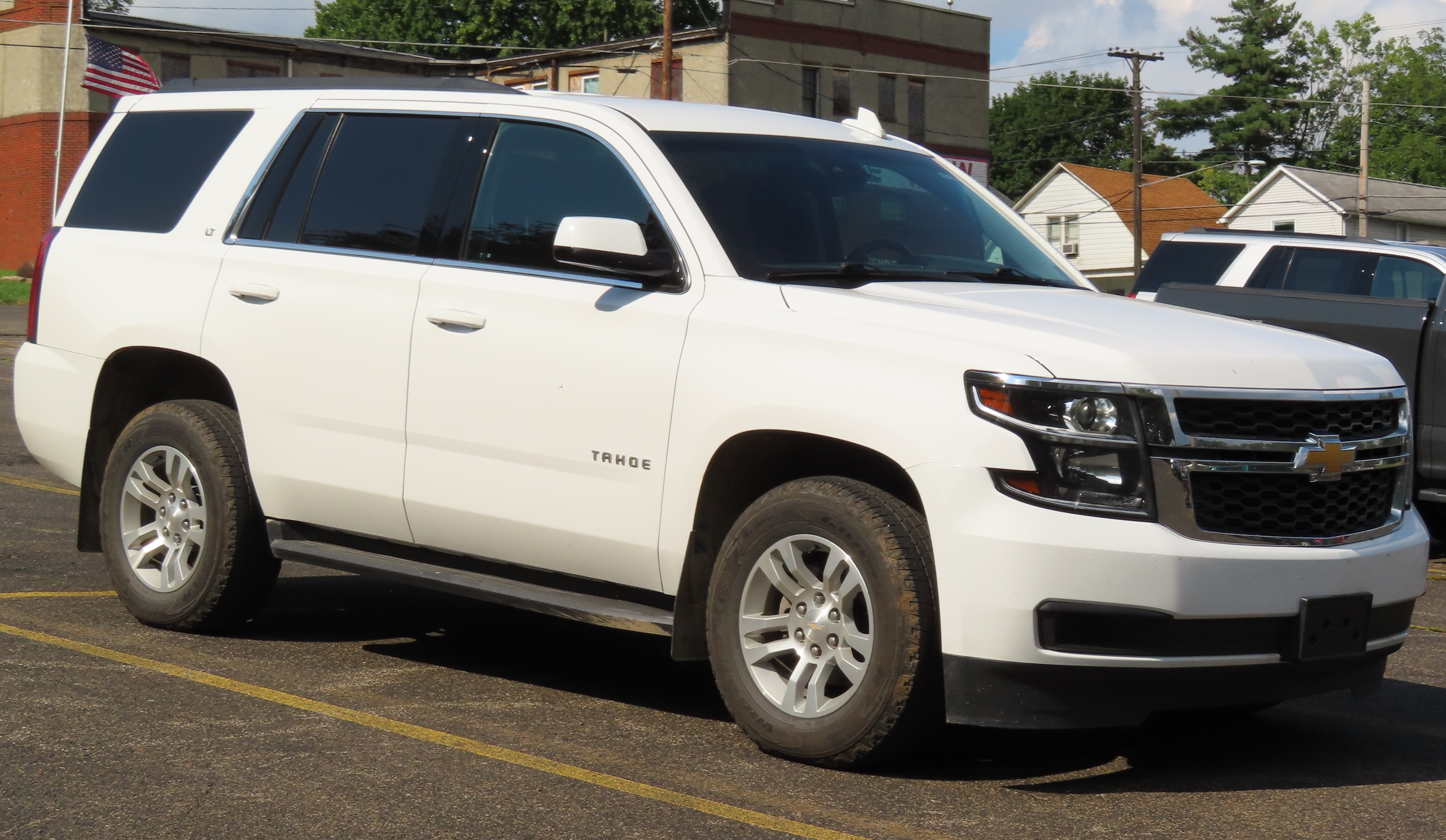
10. **Chevrolet Tahoe (2015–2020)**The Chevrolet Tahoe is a full-size SUV known for its rugged construction and long-lasting reliability. Owners consistently report that it requires minimal repairs, making it ideal for those who need a spacious vehicle without frequent service interruptions. Its combination of durable engineering, strong powertrain, and robust components ensures dependable performance over many years.
The Tahoe’s V8 engines and automatic transmissions are reliable, rarely experiencing major failures. Routine maintenance such as oil changes, brakes, and fluid checks is usually sufficient to keep the vehicle in excellent condition. Unlike some large SUVs, the Tahoe avoids common issues like premature transmission or engine failures, which helps reduce ownership costs.
Suspension components are designed to handle heavy loads and long-term use without premature wear. Shocks, struts, and control arms perform consistently, maintaining ride quality even after extended driving. Electrical systems, including infotainment, lighting, and safety features, are durable and seldom require repairs. Interior components, such as power windows, seat adjustments, and door locks, maintain functionality for years.
Chevrolet’s widespread dealer network ensures that parts are readily available and labor costs are reasonable. The Tahoe’s resale value remains strong due to its reputation for reliability and durability. Owners can enjoy a full-size SUV that combines spaciousness, capability, and minimal maintenance requirements.
For families and drivers seeking a dependable, low-maintenance SUV that remains on the road year after year, the Chevrolet Tahoe proves itself as a top choice.
**Final Thoughts: Beyond Reliability**
While the reliability of an SUV is undeniably important when selecting your next vehicle, it’s just one piece of the puzzle. To make a truly well-rounded decision that aligns with your unique needs and preferences, you’ll want to take into account other critical factors like fuel efficiency, comfort, safety features, and the overall cost of ownership. These aspects collectively contribute to the long-term satisfaction and practicality of your chosen vehicle.
Car Model Information: 2021 Chevrolet Tahoe LT
Name: Chevrolet Tahoe,GMC Yukon
Manufacturer: General Motors
Production: 1991–present (Yukon),1994–present (Tahoe)
Class: Full-size SUV
Related: Cadillac Escalade,Chevrolet Suburban,Chevrolet Silverado,Hummer H2
Layout: Front-engine, rear-wheel-drive layout
Predecessor: Chevrolet K5 Blazer
Caption: 2022 Chevrolet Tahoe RST (fifth generation)
Categories: 2000s cars, 2010s cars, 2020s cars, All-wheel-drive vehicles, All articles with unsourced statements
Summary: The Chevrolet Tahoe () is a line of full-size SUVs from Chevrolet marketed since the 1995 model year. Marketed alongside the GMC Yukon for its entire production, the Tahoe is the successor of the Chevrolet K5 Blazer; the Yukon has replaced the full-sized GMC Jimmy. Both trucks derive their nameplates from western North America, with Chevrolet referring to Lake Tahoe; GMC, the Canadian Yukon.
Initially produced as a three-door SUV wagon, a five-door wagon body was introduced for 1995, ultimately replacing the three-door body entirely. The five-door wagon shares its body with the Chevrolet and GMC Suburban (today, GMC Yukon XL) as a shorter-wheelbase variant. Since 1998, the Tahoe has served as the basis of the standard-wheelbase GMC Yukon Denali and Cadillac Escalade luxury SUVs. The Tahoe is sold in North America, parts of Asia such as the Philippines, and the Middle East, plus other countries including Bolivia, Chile, Peru, Colombia, Ecuador, and Angola as a left-hand-drive vehicle. The Yukon is only sold in North America and the Middle East.
The Tahoe has regularly been the best-selling full-size SUV in the United States, frequently outselling its competition by two to one.
Get more information about: Chevrolet Tahoe
Buying a high-performing used car >>>
Brand: Chevrolet Model: Tahoe
Price: $43,981 Mileage: 51,444 mi.
Discovering the perfect SUV shouldn’t be a journey you navigate alone. With expert insights and personalized advice, you can rest assured that you’ll not only find a reliable SUV but also one that perfectly suits your lifestyle and brings joy to every drive. By considering all these elements, you’re not just buying a vehicle; you’re investing in peace of mind and countless future adventures on the road.


